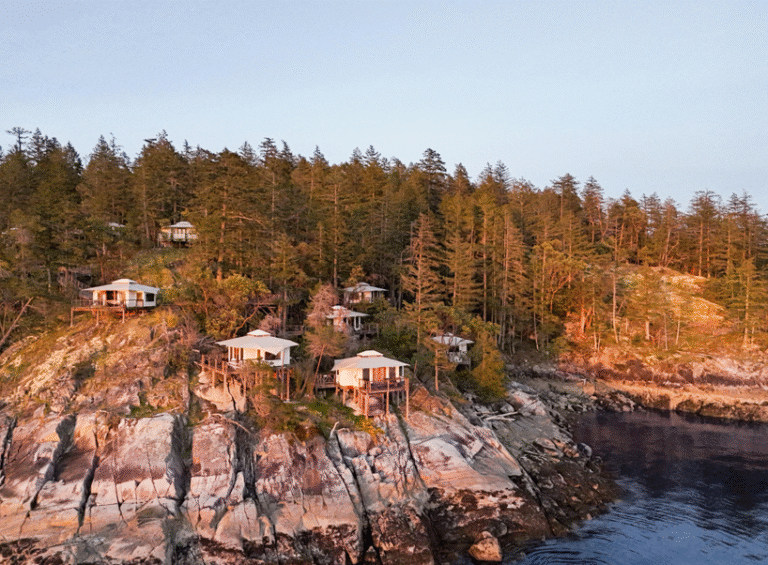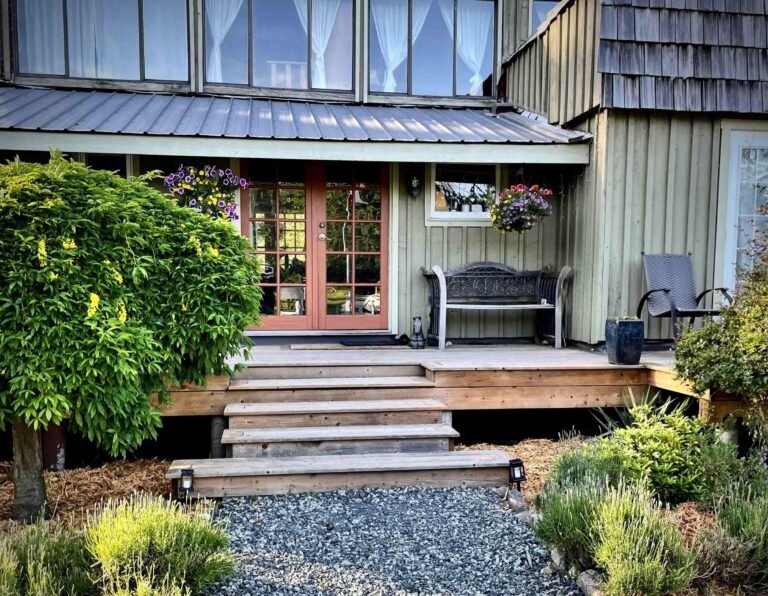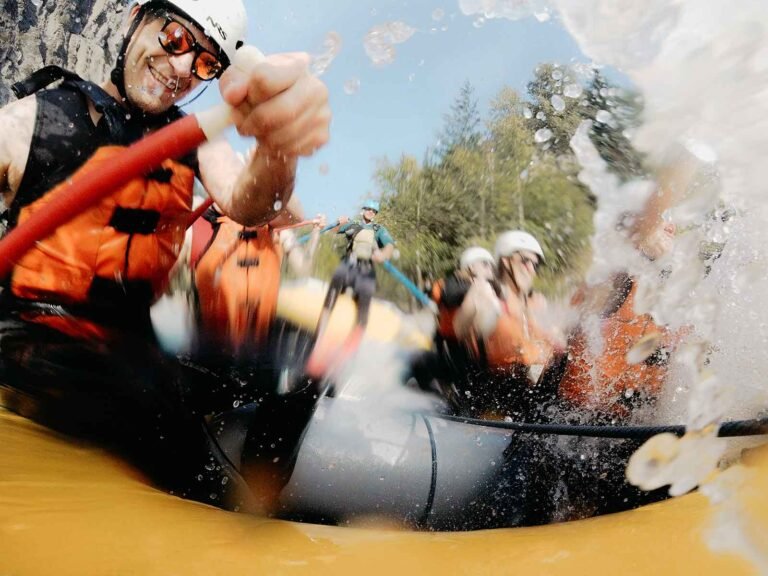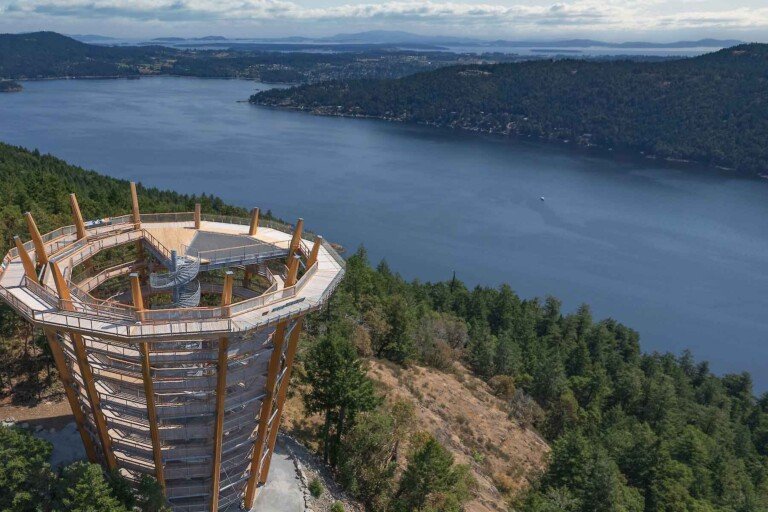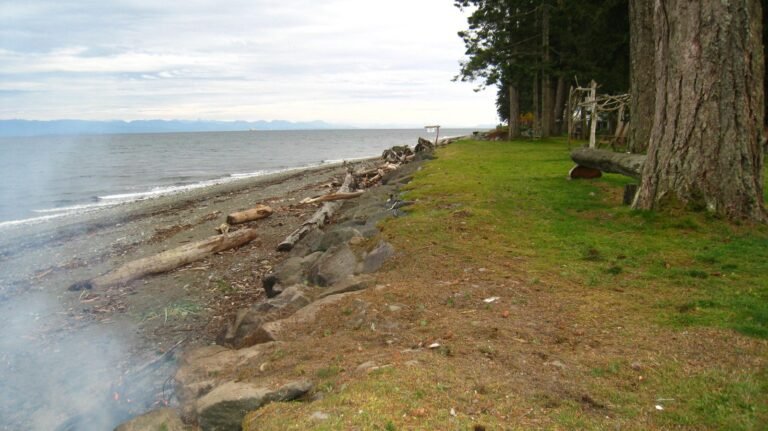Prince William Sound is a beautiful complex of deep, glacially-carved fjords on the north Gulf of Alaska. Enclosed by high mountains and glaciers, and protected from the high seas by barrier islands, the area is a boater’s paradise. Fiords, bays, coves, lakes, glaciers, mountains and hundreds of islands provide a rich and unspoiled beauty. The area’s vast size and limited development provides a true wilderness setting.
Prince William Sound is also widely used for marine commerce. Oil tanker vessels, log transport ships, fuel barges, freighters, oil industry work boats, ferries, and cruise ships make routine stops at ports in Prince William Sound. Commercial fishing boats, sport fishing charter boats, sightseeing tour boats, and privately-owned vessels also use local the harbours and docks of Prince William Sound. Communities on Prince William Sound include Whittier, Valdez, Tatilek, Cordova, Port Chalmers, and Chenega.
Because the Sound and Resurrection Bay is surrounded by mountains filled with glaciers adjacent to a relatively warm ocean current, the weather tends to be quite wet and cool. The weather is unpredictable, and although the sound is protected, it can still become a flurry of whitecaps.
Historically, Prince William Sound was a meeting place of diverse cultures, including the resident Chugach Eskimos and Eyak Indians, and Asian and European explorers and pioneers.
The location of Prince William Sound, where north temperate and sub-arctic conditions overlap, results in a wealth of natural resources
Location: Prince William Sound is an inlet of the Gulf of Alaska, located east of the Kenai Peninsula in South Alaska. Valdez and Cordova are the largest towns on Prince William Sound.
Glaciers: Prince William Sound has the highest concentration of glaciers in Alaska, and the densest concentration of tidewater glaciers in the world, some flowing a dozen miles from ice-capped peaks to terminate in cliffs of ice towering hundreds of feet above the water. Visitors can spend an afternoon cruising through glacier-carved fjords, watching glaciers calve, and experiencing the untamed wilderness and calm waters of Prince William Sound. Visitors will also view the abundant marine wildlife and learn about the natural history of the Prince William Sound. Columbia Glacier, with a three-mile wide face, is the second largest tidewater glacier in North America, extending 40 miles (64 kms) out of the Chugach Mountains. Columbia Glacier is located about 25 mile (40 kms) west of Valdez. Hubbard Glacier in the Gulf of Alaska is the largest tidewater glacier on the North American continent.
Wildlife: Prince William Sound and Resurrection Bay are premier ecosystems with a diversity of wildlife and habitat. Prince William Sound’s waters and its roughly 3,000 miles of shoreline support large numbers of sea birds, marine mammals and, until recently, some of the world’s richest herring and salmon fisheries. Five major salmon hatcheries operate in the Sound. Other important fisheries include dungeness crab, shrimp, halibut and other groundfish. The Sound is home water to one of the world’s densest populations of sea otters and killer whales. Seals, sea lions and other cetaceans are also residents and, when combined with the otters and orcas, may represent the most profuse population worldwide of marine mammals.
Prince William Sound is the northern boundary of the world’s farthest north temperate rainforest. This coastal forest strip, primarily comprised of slow growth Sitka spruce, mountain hemlock and western hemlock, is critical habitat to Sitka black-tailed deer, mountain goats and is home to a wide variety of other animals. Two hundred and forty species of birds, including about 3,000 bald eagles and a dozen major seabird colonies, are found in the Sound and the adjacent Copper River Delta region.
The Copper River Delta is a two-million acre complex of sedge marshes, braided glacial streams, intertidal sloughs and shallow ponds. Approximately 60 miles (96 kms) across, the Delta is ringed by glaciers and snowcapped peaks in the Chugach Mountain Range. The Delta is prime habitat for waterfowl, salmon, bear, wolves, goats, coyotes and a healthy population of transplanted moose. The Delta’s mudflats and sandbars support the largest concentration of shorebirds in the Western Hemisphere when these small birds migrate through the area each spring, some coming from as far away as Chile. The Dusky Canada goose and Trumpeter swan are just two of the bird species which nest in the Delta.
The small boat harbour at Whittier is the Gateway to Prince William Sound from Anchorage. Established during the Second World War as a military supply port, Whittier is located on the west side of Prince William Sound. Whittier is a year round ice-free port and is a focal point for marine activity and freight transfer from sea train barges serving South Central Alaska.
Valdez is located on the north shore of Port Valdez, a deepwater fjord in Prince William Sound. The crashing glaciers and towering Chugach mountains rising from the sea make Valdez absolutely picturesque. The growth and settlement of Valdez was attributed to fur trading, salmon canning, and gold and copper mining. During the Klondike Gold Rush of 1897-98, prospectors came to Valdez believing the Copper River and Valdez Glacier to be the entry to the interior gold fields. From 1910 to 1916, copper and gold mining flourished in the area. In the early 1970’s, Valdez became the staging area for work on the lower portion of the Trans Alaska Pipeline. Today, Valdez hosts the Valdez Marine Terminal, which is the southernmost end of the 800-mile pipeline. Valdez is situated 120 air miles (192 kms) east of Anchorage, or 305 miles (488 kms) by the Richardson and Glenn Highways.
Cordova is a community of 3,000 year-round residents on the eastern shore of Orca Inlet, offering good access to both Prince William Sound and the adjacent Copper River Delta, the largest contiguous wetlands in the Western USA. Once a railroad gateway to Alaska’s interior, Cordova today is a hub of commercial fishing activity with a growing tourism industry, a modern airport with daily jet service to Anchorage and Seattle, and regular ferry service to Valdez, Whittier and Seward. Access to Cordova is limited to airplane and ferry – no roads connect the town to the rest of the state.
State Marine Parks in Prince William Sound
Parks near Whittier: Many of the parks in Prince William Sound can be reached from Whittier. There are seven parks near Port Wells and another further south on Latouche Island. These parks offer the weekend boater plenty of options for protected anchorages in forested or glaciated surroundings. Special attractions include wildlife viewing, good camping areas, historic sites and one of the world’s largest fish hatcheries. Decision Point State Marine Park is located at the eastern end of Passage Canal approximately eight miles from Whittier. Entry Cove State Marine Park is located two miles directly east of Decision Point on the northeast corner where Passage Canal and Port Wells meet. Surprise Cove State Marine Park is located on the western side of the mouth of Cochrane Bay. Ziegler Cove State Marine Park Ziegler Cove is located on of northern side at the mouth of Pigot Bay 18 miles from Whittier. Granite Bay State Marine Park is located on the northwest corner of Esther Island about 25 miles from Whittier. South Esther Island State Marine Park is located on the southern end of Esther Island. Bettles Bay State Marine Park is an excellent anchorage near the mouth of Bettles Bay. Horseshoe Bay on Latouche Island is located three miles northeast of the new town of Chenega Bay.
Parks Near Valdez: Sawmill Bay, Shoup Bay and Jack Bay parks offer a variety of recreational opportunities within an hour’s boat ride from Valdez. While located next to the main shipping channel to the Valdez Oil Terminal, these parks offer excellent opportunities for a wilderness experience. The serene, forest-ringed Sawmill Bay SMP offers protected anchorages and good camping. For island camping and a fair-weather anchorage, visit Jack Bay SMP. Shoup Glacier spills into an iceberg-filled saltwater lagoon accessible on most high tides by small shallow-drafted boats. Visitors will enjoy views of the glacier, interesting geologic features and a large kittiwake rookery. Shoup Bay State Marine Park is located five miles southwest of the Port of Valdez. Sawmill Bay State Marine Park is 15 miles from Valdez and three miles west of Valdez Narrows. Jack Bay State Marine Park is located 15 miles from Valdez, southeast of Valdez Narrows.
Parks near Cordova: Three diverse marine parks are located near Cordova. Canoe Passage SMP is a shallow wetlands passage cutting through Hawkins Island. Boswell Bay SMP, adjacent to the Copper River Delta Critical Habitat Area, contains vast tidelands and high energy beaches. Beachcombers and wildlife watchers will find this area an excellent spot for exploring. Kayak Island SMP is located at the approximate site of the landing of the Bering Expedition in 1741 – the first Europeans to set foot in Alaska. A large dagger of land thrust out into the cold, unpredictable waters of the Gulf of Alaska, it offers a rare adventure to the few who visit it. Canoe Passage State Marine Park is located on Hawkins Island, eight miles west of Cordova. Boswell Bay State Marine Park is located on the eastern tip of Hinchinbrook Island. Kayak Island lies in the Gulf of Alaska some 50 miles southeast of Cordova.
On 24 March 1989 the Exxon Valdez ran aground on Bligh Reef in Prince William Sound, spilling approximately 11 million gallons of crude oil into the previously pristine and biologically rich area. More than 700 miles of Alaska shoreline were covered with crude oil, which fouled the waters and shorelines of both National Wildlife Refuges and National Parks. As a result, more than 36,000 migratory birds were killed, including at least 100 bald eagle, along with numerous other varieties of wildlife.
The images of heavily oiled shorelines, dead and dying wildlife, and the thousands of workers mobilized to clean beaches, were viewed with horror around the world. Since the spill, teams of biologists, geologists, and chemists have monitored and studied the affected shorelines of Prince William Sound to assess its recovery from the environmentally devastating accident.
The plant and animal populations of the sound are still adjusting themselves in response to the spill, but many haven’t yet completely recovered. Impacts from the spill remain in Prince William Sound, in the form of oil still leaching from beaches. Although little of the spilled oil remains, oily vestiges are still evident on many beaches. Beaches that had been denuded of plants and animals by the toxic effects of oil and by the intense cleanup efforts show extensive recolonization and are similar in appearance to areas that were unoiled. In some areas, intertidal animals such as mussels are still contaminated by oil, and rich clam beds that suffered high mortalities from oil and extensive beach cleaning have not repopulated to their previous levels. Some rocky sites that were stripped of heavy plant cover by high-pressure, hot-water cleaning remain mostly bare rock.
Exxon Corporation and Exxon Shipping Company agreed with the US Department of Justice to pay a record one billion dollars in criminal fines and civil damages in connection with the oil spill, by far the largest single environmental criminal recovery ever exacted. Exxon has also spent approximately $2.2 billion to clean up Prince William Sound and the Gulf of Alaska. In February 2007, Exxon reported the largest annual earnings ever of a US company: $39.5 billion. The penalty and cost of the oil spill was relatively minor compared to their earnings.
A tsunami caused by the Good Friday Earthquake (also called the Great Alaska Earthquake) in 1964 killed a number of Chugach villagers living on the shores of Prince William Sound in Chenega. The tidal wave also destroyed the town of Valdez. The magnitude 9.2 earthquake, which resulted in 131 deaths, was centered in Prince William Sound.


